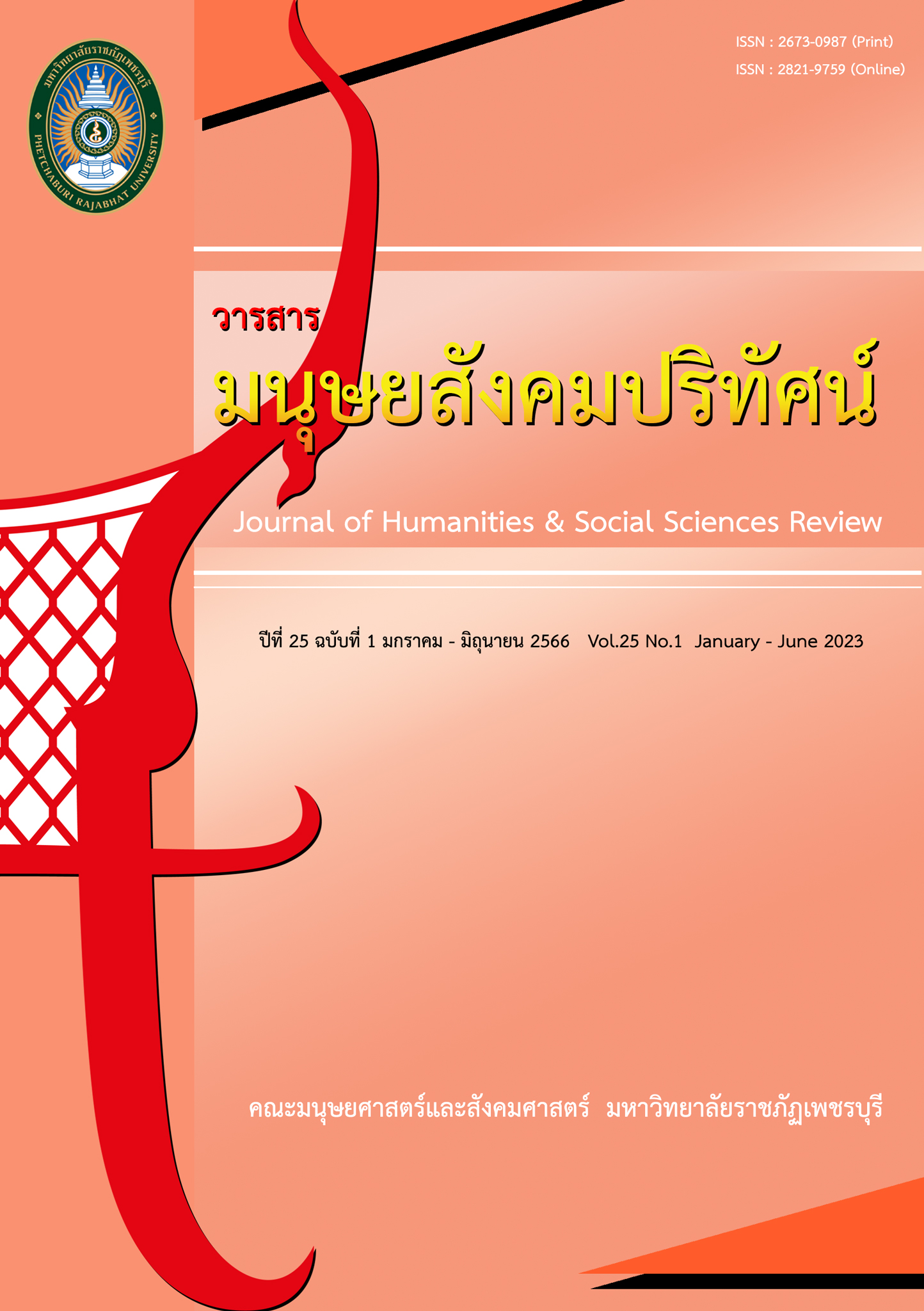Guidelines for the Development of Tourism Strategies According to the 20 years National Strategy of Hua Hin District, Prachuap Khiri Khan Province
Main Article Content
Abstract
This mixed methods research aimed to study: (1) tourism development level of Hua Hin District, (2) a causal relationship between Thailand’s 20-Year National Strategy in tourism development and tourism management of Hua-Hin District, and (3) guidelines for tourism development under Thailand’s 20-Year National Strategy of Hua Hin District. Samples used in this study were 130 hotel operators, restaurant owners, and bus operators include 8 key informants. Data were treated and analyzed by using descriptive and Inferential Statistics methods, which were frequency percentage, mean, standard deviation, Chi-square test and Multiple Regression Analysis. Research results: (1) tourism development level of Hua-Hin District, as a whole and at each aspect, was at a high level, (2) there were causal relationships between Thailand’s 20-Year National Strategy and the tourism management; in terms of: enhancing different capabilities aspect, broadening opportunities and promoting equality in society aspect, and reforming government administration with a focus on public interest aspect at statistical significant level of 0.001, at the significant level of 0.01 for improving quality of life based on green growth aspect and at the significant level of 0.05 for public participation aspect, and (3) Tourism development guidelines were: tourist attractions, local product and services, infra structures, tourism amenities, tourism personnel and tourism applications.
Article Details
1. Any views and comments in the article are the authors’ views. The editorial board has not to agree with those views and it is not considered as the editorial board’s responsibility. In case, there is any lawsuit about copyright infringement, it is considered as the authors’ sole responsibility.
2. The article copyright belonging to Faculty of Humanities and Social Sciences, Phetchaburi Rajabhat University are copyrighted legally. Republication must be received direct permission from the authors and Phetchaburi Rajabhat University in written form.
References
กรมการท่องเที่ยว. (2561). แผนยุทธศาสตร์พัฒนาการท่องเที่ยว พ.ศ. 2561-2564 ของกรมการท่องเที่ยว. กรุงเทพฯ: วีไอพี ก็อปปี้ปริ้น.
ขวัญนภา สุขคร และคณะ. (2560). การพัฒนายุทธศาสตร์การพัฒนาการท่องเที่ยวเชิงบูรณาการ : ตามแนวคิดลำปางเมืองไม่หมุนตามกาลเวลา. วารสารวิจัยมหาวิทยาลัยราชภัฏสวนดุสิต, 13(2): 1-26.
เทศบาลเมืองหัวหิน. (2562). แผนพัฒนาท้องถิ่น (พ.ศ. 2561-2565) เทศบาลเมืองหัวหิน. ประจวบคีรีขันธ์: ผู้แต่ง.
นาตยา บุตรอยู่. (2557). แนวทางการพัฒนาการท่องเที่ยวอย่างยั่งยืน อำเภอเมืองประจวบคีรีขันธ์ จังหวัดประจวบคีรีขันธ์. วิทยานิพนธ์บริหารธุรกิจมหาบัณฑิต มหาวิทยาลัยศิลปากร.
ปิรันธ์ ชิณโชติ. (2558). การพัฒนาตัวแบบยุทธศาสตร์การจัดการคุณภาพเพื่อการท่องเที่ยวเชิงสร้างสรรค์ของสวนผึ้ง. วิทยานิพนธ์ปรัชญาดุษฎีบัณฑิต สาขาวิชาการจัดการ มหาวิทยาลัยศิลปากร.
พงษ์ศักดิ์ เพชรสถิตย์. (2558). ยุทธศาสตร์การบริหารจัดการการท่องเที่ยวอย่างยั่งยืนของจังหวัดกำแพงเพชร. สักทอง: วารสารมนุษยศาสตร์และสังคมศาสตร์ มหาวิทยาลัยราชภัฎกำแพงเพชร, 21(2): 173-186.
รพีพรรณ จันทับ. (2558). ปัจจัยด้านอัตลักษณ์ทรัพยากรท่องเที่ยวที่มีผลต่อความสำเร็จในการจัดการการท่องเที่ยวหมู่บ้านช้างบ้านตากลาง จังหวัดสุรินทร์. วิทยานิพนธ์ศิลปศาสตรมหาบัณฑิต มหาวิทยาลัยมหาสารคาม.
วลัยลักษณ์ รัตนวงศ์. (2557). ปัจจัยเชิงเหตุและผลของนวัตกรรมการบริการสำหรับธุรกิจนำเที่ยวภาคใต้ของประเทศไทย. วิทยานิพนธ์ปรัชญาดุษฎีบัณฑิต สาขาการจัดการ มหาวิทยาลัยสงขลานครินทร์.
สยามรัฐออนไลน์. (2564). เปิดไทม์ไลน์ “หัวหิน รีชาร์ท” แนวทางพลิกวิกฤตจากโควิด 19 เร่งฟื้นเศรษฐกิจการท่องเที่ยวเมืองหัวหิน. สืบค้นเมื่อ 10 มีนาคม 2565 จาก https://siamrath.co.th/n/243449.
สำนักงานปลัดกระทรวงการท่องเที่ยวและกีฬา. (2560). แผนพัฒนาการท่องเที่ยว ฉบับที่ 2 (พ.ศ. 256-2564). กรุงเทพฯ: สำนักงานกิจการโรงพิมพ์องค์การสงเคราะห์ทหารผ่านศึก.
Green, S. B. (1991). How many subjects dose it take to do a regression analysis? Multivariate Behavioral Research, 26(3): 499-510.


